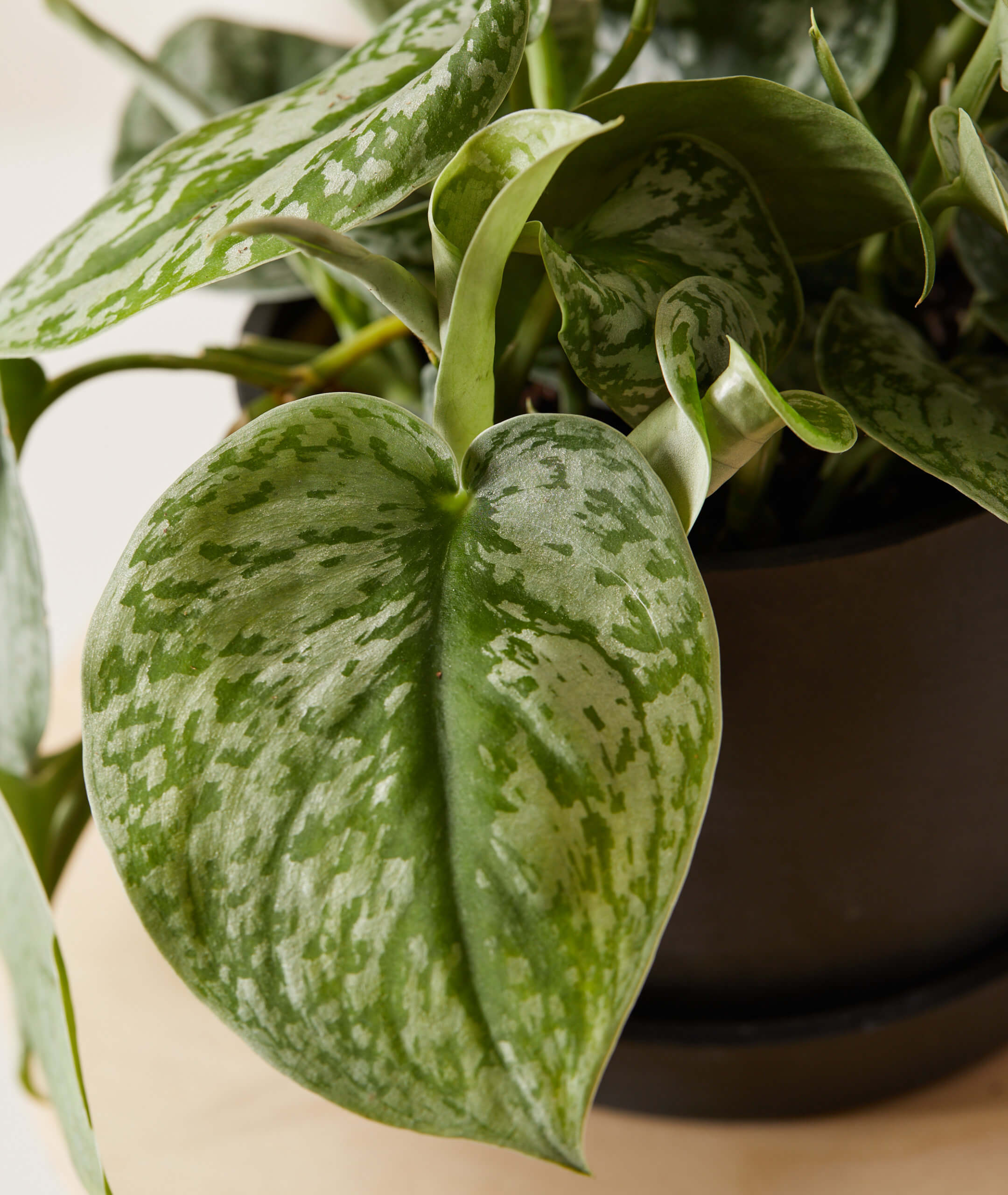Overwatering
Your Scindapsus likes to dry out between waterings. If it’s watered too often, the roots don’t have time to process the water in the soil causing them to suffocate and ultimately leading to root rot. Water when 50-75% of the soil volume is dry. Always check the soil moisture before watering. Water thoroughly until you see water flow from the drainage hole. Discard any excess water in the saucer to avoid root rot.
Too Little Light
While your Scindapsus can adapt to lower light, extreme low light can cause yellowing. Your plant needs sunlight to photosynthesize and process the water in the soil. If the plant doesn’t get enough light, it’s not able to properly take up water or produce enough chlorophyll. Other signs your plant isn’t getting enough light are a leggy appearance, the soil remaining moist for an extended period of time, or little to no new growth.
Your Scindapsus prefers bright indirect light. Bright indirect light can be found close to an east-facing window or a few feet back from an unobstructed southern or western window. If the southern or western window has something to filter the light like a sheer curtain or natural shade from a tree or building outside, the plant can be placed a little closer.To learn more about indoor plant lighting, check out our lighting guide here!
Pests
A weakened or stressed plant is more susceptible to insect infestations. Sap-sucking bugs like spider mites can drain your plant of moisture. This problem quickly manifests itself by yellowing leaves. Scale, mealybugs, and spider mites occur frequently in indoor conditions. If not killed early on, these small pests proliferate and move all along leaves and stems into nooks and crannies. The piercing mouths of the insects exhaust your plant and accelerate yellowing, especially if your plant is already unhealthy from poor lighting, a nutrient deficiency, or improper soil moisture.
Some yellowing is natural
Is your Scindapsus pushing out new growth? If there is new growth on your plant and the yellowing is occurring on older leaves near the bottom of the plant, this yellowing is natural. Your plant sheds its old leaves and sends energy to new growth.










